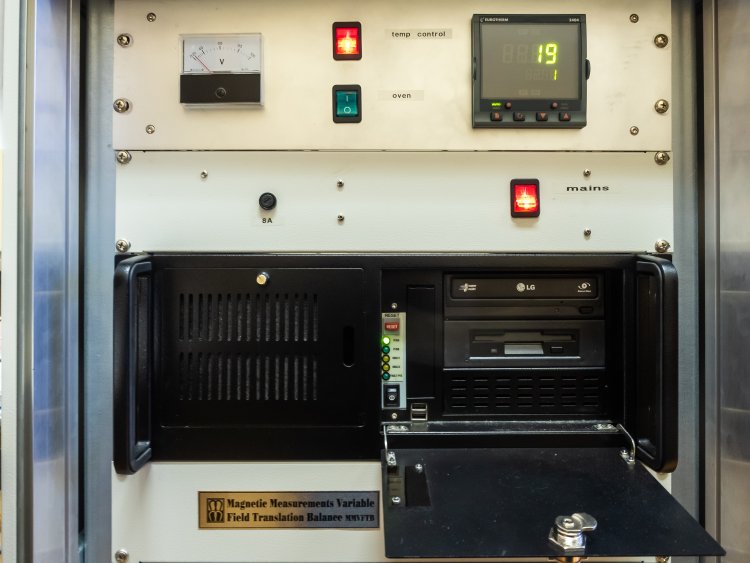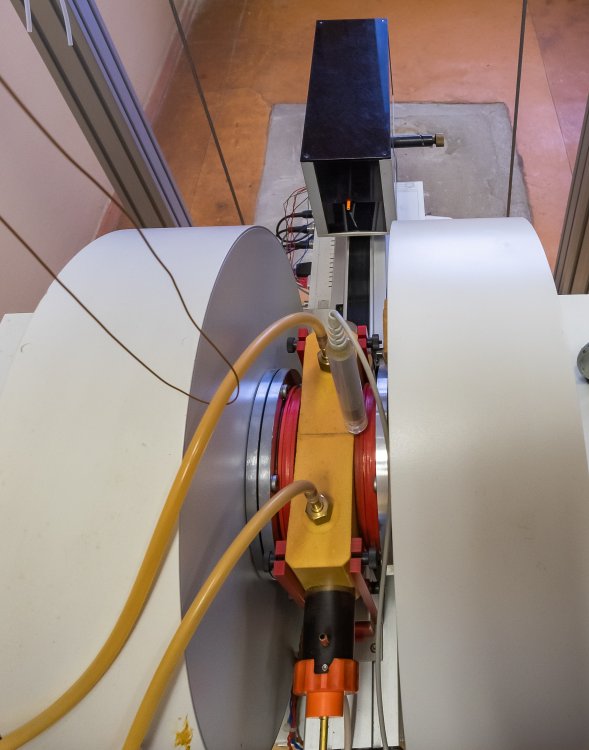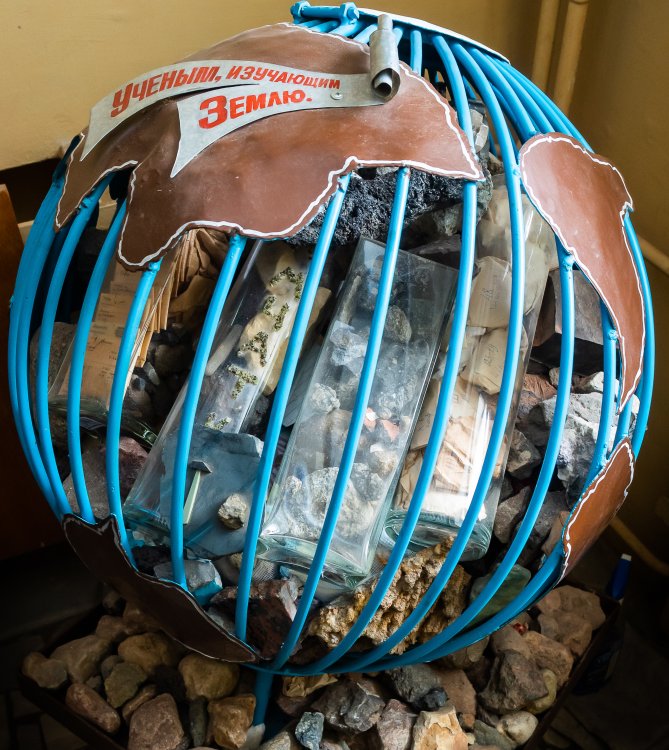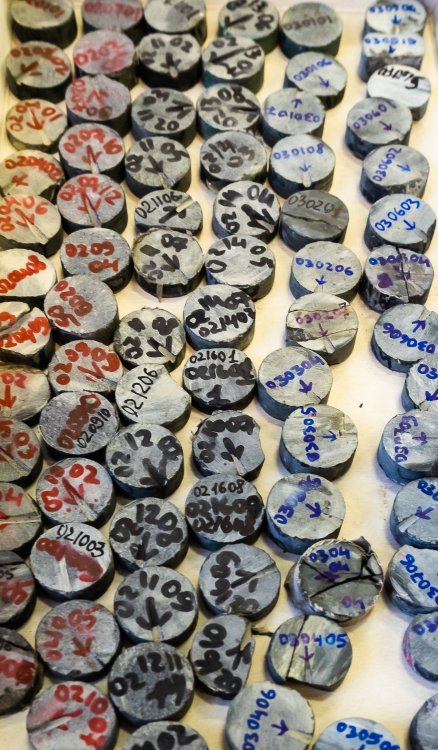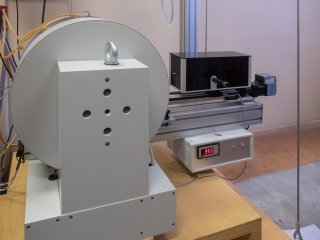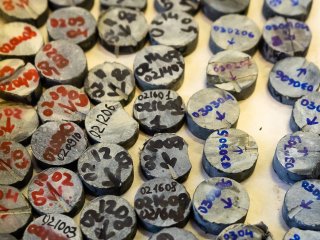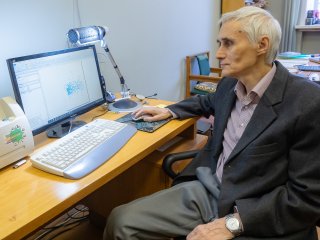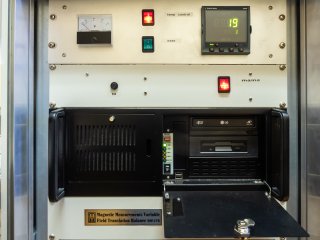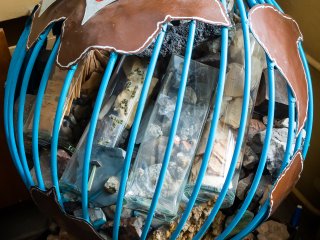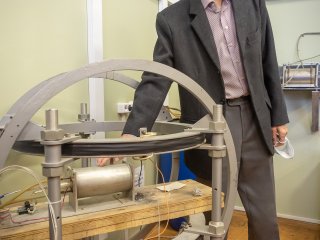The magnetic field protects us from space radiation and solar wind. There would have been no life on our planet without it. What will happen if magnetic field inversion occurs?
It turns out that the inversion of magnetic field poses a real danger. How to avoid the consequences destructive for all living things? The answers to these questions are provided by Valery Scherbakov, head of paleomagnetism and matter research laboratory at Geophysical Observatory Borok of the Institute for Physics of the Earth, RAS, doctor of physics and mathematics, professor.
Valery Prokhorovich Scherbakov
– Valery Prokhorovich, what does your laboratory deal with? What research problems do you solve?
– Since the very date of its foundation 60 years ago, the laboratory has been dealing with two topics – research of geomagnetic field’s behavior in geological past and studies of rock matter with the help of electronic microscopy, x-ray structural analysis and other analytical methods.
The laboratory was founded by Alexander Bolshakov who arrived in Borok soon after our settlement had turned into a research center. At first, our instruments were assembled from scratch. The specific feature of paleomagnetism and rock magnetism lies in the fact that standard physical instruments used in the physics of magnetism are unfitted for our purposes, as we measure rock with low magnetic intensity and weak fields inducing this magnetic intensity. Physicists usually deal with strong rock and strong magnetic fields, so their instruments were unfitted for us as a rule.
– How do you solve this problem?
– At first, we were just looking for talented engineers who would come to work here. They would build homemade instruments taking foreign experience into account. Actually, geophysics is an international science by definition. We cannot work in isolation, and we were not isolated from the world even when the Soviet Union was closed for foreign scientists. We had good connections via various channels, including the ones in the field of instrument-making. At that time, we built a homemade astatic magnetometer and the so-called rock-generator, which was later produced in Baku. This device was very heavy requiring two men to carry it, yet it performed its function perfectly. As the Soviet Union was on friendly terms with the countries of communist bloc, Czechoslovakia in particular, the specialists in Brno took this project and made a good-looking instrument that now bears the name of JR. Today, it is a cutting-edge device with high sensitivity which is sold all over the world in different modifications, though actually the first version of it has been designed at our laboratory. This is how we tried to survive.
– I know that there are still are unique instruments at your laboratory. You are active in using them, and these devices never let you down. Please tell me about this equipment.
Photo from the personal archive of V.P. Scherbakov
– As I have already mentioned, rock-generators were invented to measure rock with low values of magnetic intensity. However, our goals and objectives require measuring magnetic intensity of the samples not only at room temperature but in conditions of heating at high temperature simultaneously applying magnetic field to them. We needed furnaces or stoves for this purpose. Building a furnace looks to be an easy task at first glance. However, it is not so. We require the furnace placed into a non-magnetic screen, as the experiments we deal with must be carried out in non-magnetic environment. Such screens are made of permalloy, the material well-known in physics. Thus, the experiment looked awkward. First, the sample was heated up to some certain temperature value and cooled, then its magnetic intensity was measured in the said rock-generator at the room temperature, after that it was heated to higher temperature, etc. This cycle was repeated 10-20 times.
Naturally, nobody was happy about this situation, and it was clear that we should combine heating and measurement operations somehow having an opportunity to measure the magnetic intensity of sample continuously in the course of the whole cycle (heating-cooling). For this very purpose, Konstantin Burakov, specialist working at the Institute for Physics of the Earth, invented a vibrating thermos-magnetometer (a vertically placed sample was vibrating inside the furnace in the permalloy non-magnetic screen) back in the past century. This device would work at the Moscow-based laboratory of our institute long enough and quite successfully.
A bit later, talented engineer Yuri Vinogradov came to work to Borok. He modified Burakov’s instrument. The new version of thermo-magnetometer in capable of measuring the full vector of magnetic intensity in the course of heating and cooling the sample. Moreover, as we always had connections abroad, our foreign colleagues would often come to Borok to operate this unique equipment which they liked. I should say that the design thought was making progress in the West as well. Several years ago, Paris-based scientists designed their own version of thermos-magnetometer tailored specifically for the goals and objectives of archeomagnetism.
Photo from the personal archive of V.P. Scherbakov
Recently, our instrument was updated and now is completely computer-controlled. Thus, we put the sample into the holder, start the program and get the files ready for processing after the program is completed. For more labor-intensive experiments dealing with measuring paleo-intensity that require performing dozens of sequential heating operations varying the field value and measuring magnetic intensity after each heating cycle, we leave the equipment working overnight, come to the laboratory in the morning and pick-up the ready results. Our employees joke that it would be great if this instrument wrote scholar papers on its own. It is certainly a pity that the device is not capable of writing papers, but such equipment is really unique.
Vinogradov unfortunately is not with us anymore, yet his colleagues are still working at the laboratory. They render aid to us in operating the existing instruments and have recently made new devices for the needs of our institute. As I have already said, similar instruments have been made abroad (Paris) in single quantities, but our equipment is still more sensitive and reliable that their one.
– Valery Prokhorovich, let us talk about the results of your research studies that you have managed to obtain with the help of this equipment. The mysteries of geological past and differences in magnetic field of the Earth that you observe are of special interest for us. It appears that the magnetic field is changing all the time, and now it is different from the one observed 2,000 or 5,000 years ago. Is it so?
– You are quite right. The magnetic field of the Earth is changing every second, though certainly not so much. I should say that the scientists started studying the magnetic field of the Earth when navigation in the open ocean began. They gradually noticed that the field value is not constant, and its direction is changing. These changes become visible over 100 years, and we have to correct magnetic charts.
Photo from the personal archive of V.P. Scherbakov
In late 19th – early 20th centuries, the scientists started studying the magnetic properties of rock. At that time age of the rock was not clear enough, as this rock is very old. The research as regards the rock age began only in the 20th century. In early 20th century, the Japanese discovered that there are rocks with magnetic intensity directed reversely to the field we have today. It became clear that the direction of magnetic field may change dramatically, up to reverse polarity. The results of further research confirmed the existence of rocks with reverse polarity.
It was at that time that notion geomagnetic field inversion came into general use. The studies of this inversion have turned out to be a very interesting and fruitful area of research. Many Russian and foreign specialists are working in this field of science. Asa result, today we have not only a standard stratigraphic scale, but magnetostratigraphic one as well. Our outstanding paleomagnetologist Alexey Khramov (Saint Petersburg) stood at the dawn of it. According to this scale, such inversions have taken place thousands of times minimum over the past 500 million years.
Moreover, the processes of the past 160 million years have been studied in detail, and one can say for sure the inversion (the poles swapping places) would occur every 200,000 years at the average over this period of time.
– In what way does it happen?
– It is a very important question that is directly related to the evolution of geomagnetic field within the lifetime of Earth as a planet. Direction and intensity are its main characteristics, and our laboratory has always specialized exactly in studying the field intensity, both during the inversion and over the whole geological history of the Earth.
It stands to mention that the research of paleo-intensity is the most labor-consuming process in paleomagnetism. It is like Mayakovsky wrote – “tons of the lexicon ore excavating all for the sake of one precious word.” As for us, we process kilograms of rock only for the sake of one precious fact, as rock – despite its seeming hardness and regularity – is a very capricious object. In order to measure intensity, one requires that the rock should keep to the present time the recording about the value and direction of the geomagnetic field at the time of its formation and undergo no changes in the process of heating at the laboratory. These requirements look tough enough. That is why we measure not only the magnetic intensity of the rock, but its physical and chemical properties as well. Here, various microscopes, x-ray equipment, precision enough magnetic measuring instruments, etc. are of serious help to us. Put it in a word, it is a separate area of magnetism physics which is known as rock magnetism.
However, we cannot verify what we have got with the help of direct experiment, unlike those dealing with conventional physical sciences. For instance, we say that the magnetic field had this or that intensity and direction a couple of billion years ago, yet we cannot make direct measurements of the field existing in these faraway periods of time, and therefore make the conclusions only on the basis of indirect measurement results obtained while studying the magnetic intensity of rocks. However, as I have already mentioned, such studies are really very uneasy and freakish business. That is why the majority of articles devoted to paleomagnetism are aimed at proving that the results of our measurements are really reliable and trustworthy. Actually, most of the time spent for working with collections is devoted to this very purpose.
– What data have you obtained?
– It is actually the topic of discussion – the intensity of geomagnetic field during its inversion, i.e. the change of magnetic poles’ operator. We should understand that the inversion is not the process of magnetic-type dipole of the Earth turning in the manner that the compass needle dies. In reality, this process takes about 10,000 years and features the position of magnetic poles gradually shifting from the polar regions towards middle and equatorial latitudes, while the field intensity, parallel to this, is reducing to the values that are by 10 times lower if compared to its present value.
Several thousand years later, the field starts reestablishing in terms of value and stabilizing in terms of direction, yet with the opposite position of geomagnetic poles. Thus, at the height of inversion, geomagnetic dipole looks to disappear, and only multipole constituents with complicated enough geometry remain.
While now (during the normal period) we see well-defined south and north geomagnetic poles due to dipolar nature of the field, there may be, for instance, four of them during inversion with weak dipolar component. Moreover, they are moving rapidly along the Earth due to high instability of the field.
As far as geological periods are concerned, the intensity of field might have change dramatically even in stable periods in the course of the Earth’s evolution as a planet. Say, a part of Mesozoic period – in the interval between 130 and 250 million years ago – featured the intensity of approximately thrice lower if compared to the one typical of the present time. If we go deeper into the past, to the periods billions of years ago, an interesting question arises: when exactly did the generation of geomagnetic field take place? According to the data we currently have, it happened early enough. While the Earth as a planet is about 4.5 billion years old, the geomagnetic field was definitely generated 4 billion years ago. It was actually an existential event, as but for the existence of magnetic field, there would have been no atmosphere on the Earth.
– And there would have been no life on the plant, wouldn’t there?
Photo from the personal archive of V.P. Scherbakov
– Yes, our planet would have looked like a desert, the one we see on Mars, as the solar wind would destroy this atmosphere, especially at the early stages, when the Earth was being born. The magnetic field is actually the famous screen that protects us from the solar wind. The fact that the magnetic field was generated on the Earth so early is both serious luck and indispensable precondition for the advent of complex enough lifeforms on the Earth.
Naturally, the fact that this magnetic field has existed all the time since the very moment of its generation looks significant enough, yet strange things have been recently found with regards to that. While studying the development of terrestrial biota, the scientists always specify the so-called Cambrian explosion that took place about 450 million years ago, when the change of geological areas occurred – Proterozoic period was replaced by Phanerozoic one – the era of life. We cannot say that there was no life in Proterozoic period, it naturally existed, but it was at the cusp of Proterozoic and Mesozoic periods, in the so called Cambrian time, that complex multicellular organisms originated. This very transition to diversity of lifeforms is called Cambrian explosion, as the evolution from primary lifeforms to a great variety of organisms took a short (by the standards of geology) period of time – some 10-20 million years.
Now then, no matter whether it looks accidental or not, but the recent research conducted at our laboratory, and, as it has turned out, the studies carried out in the USA simultaneously by well-known specialist in geomagnetology John Tarduno showed one and the same thing – at some stage on the cusp of Proterozoic and Phanerozoic periods, the intensity of geomagnetic field was lower than its current value by about 10 times, i.e. the field was weak and variable like the field during inversion.
– Could this very phenomenon trigger Cambrian explosion?
– There is such a hypothesis. To be exact, it is supposed that weak field is one of many factors of planetary scale describing the events taking place on the Earth in that period. The reasons behind Cambrian explosion constitute an interesting and urgent interdisciplinary problem, and the impact of geomagnetic field’s behavior pattern in that period also deserves being thoroughly studied. Besides, we are active in dealing with the issue as to the possible existence of abnormal epochs. I mean the ones in the history of the Earth, when the work geomagnetic generator would falter leading to abnormal behavior pattern of geomagnetic field on the Earth’s surface, like the one typical of the inversion period. Some extraneous phenomenon might have probably taken place in the core of the Earth.
For instance, one of the hypotheses suggests the origination of a solid core inside the liquid one of the Earth exactly by the moment of Cambrian explosion. Such a phenomenon would change the work of geomagnetic generator dramatically, so the characteristics of geomagnetic field would naturally undergo serious changes.
Put it differently, everything on the Earth is interrelated. The phenomena taking place in the core of the Earth may make an impact on the planet’s biota. On the other hand, the reverse processes are possible. For instance, the course of biological processes on the Earth may have a substantial impact on its climate.
– Valery Prokhorovich, it is rumored from time to time that we should expect the inversion of magnetic field shortly. Is it so? What will happen, if these rumors are true?
– There are different speculations in this regard. Nevertheless, we must neither ignore this effect, nor rule out such a possibility. My colleague and I wrote a theoretical scholar paper about unconventional structure of magnetosphere (i.e. our magnetic shield) back in 1991. Later, in about 2000, our colleagues from Germany paid attention to it, and active research into this topic was carried out by the specialists in the field of magnetosphere and ionosphere.
What may happen in the period of inversion? The magnetosphere as a magnetic screen will not go out of existence, as the geomagnetic field, though severely weakened and probably multipolar in terms of its geometry, will still remain. However, its protective ability with regards to shielding from the solar wind and space radiation will drop in strength dramatically. Indeed, the geomagnetic poles are now located in the areas of geographic ones. The Earth is rotating, but the two poles are directed at the side perpendicular to the Sun, so the configuration of magnetosphere hardly undergoes serious changes despite the daily rotation of the Earth, which ensures magnetic shielding from the external influences.
However, if the inversion occurs, geomagnetic poles may travel all over the Earth’s surface, and once one of the poles would definitely get into a subsolar point located in the area of equator.
– What will happen in this case? The polar bears and penguins will be at a loss not knowing where to run, won’t they?
– Solar wind will rush into the resulting hole in the magnetosphere (the so-called cusp), and the quantities of it will be such that are not typical for normal magnetosphere. Northern lights will glow all over the Earth, while solar plasma will start bombarding the ionosphere directly. It will result in such magnetic storms that the ones we see today will seem a grain of sand in the desert on the background of them. At present, the phenomenon called a magnetic storm is actually just a weak disturbance of geomagnetic field, as its intensity in middle latitudes is changing by 0.1% maximum even during a strong storm. During the inversion, however, real storms will burst out, as the field will change due to the Earth’s daily rotation with the value of such a change being equal to the value of the field itself. Moreover, strong ionosphere currents may occur, and the Earth will find itself being full of electron and ion plasma. The intensity of electric fields in the atmosphere and ionosphere of the Earth is likely to grow substantially, which may lead to powerful thunderstorm activity all over the planet. Put it differently, unconventional geophysical processes taking place during inversion – this period takes thousands of years! – may change the climate on the planet dramatically and make a serious impact on the evolution of the Earth’s biosphere.
Photo from the personal archive of V.P. Scherbakov
– It looks frightening, doesn’t it? Is forecasting possible here?
– As I have already said, the inversion when the poles changed places have occurred every 200,000 years at the average over the past 160 million years. Moreover, the last inversion took place 780,000 years ago. It means that the advent of next inversion has delayed. Consequently, it is high time for it to occur shortly, according to the probability theory.
– It may happen at any moment, right?
– No, it is not as simple as that. The analysis of inversion statistics shows that the probability of its occurrence in the near future is actually low, though such a possibility should not be completely ruled out. As calculations indicate, the statistical probability of it to happen in the coming 30,000 years is estimated at about 5%. It is not at all a low figure. Moreover, as is known from instrumental monitoring, the intensity of the Earth’s magnetic field has been dropping down by about 5% in a century over the past 400 years. It is a question whether this drop stops in the subsequent several centuries. Put it differently, the mankind should actually be ready for serious changes in the magnetic field in the coming 200-300 years.
– Valery Prokhorovich, here is the main question. In what way can the mankind get prepared for that?
– Recently, I have attended the All-Russian Olympiad of School Children as a member of jury. We set a question to the boys and girls what they would do if the inversion occurred. The school children suggested their variants of behavior. The most popular one sounded like that, “Let us increase the current to such a value that is capable of generating a strong magnetic field which will compensate for the absence of geomagnetic one.”
– Yet, we will probably have not enough power to do it…
– Yes, we had to explain to them that it is absolutely impossible at the current stage of technological development, as you cannot imagine the energy scale of spontaneous processes related to the Earth.
– We can make some underground bunkers, can’t we?
– The construction of underground bunkers was the second suggestion. However, the variant of hiding from space radiation in underground shelters will hardly suit anybody, if the goal lies in providing normal living conditions for the people. In fact, it is not necessary to secure non-magnetic space all over the Earth’s surface. It is enough to make large non-magnetic domes and live under them. Under these domes, it is technologically possible to create the situation when we will live in artificial magnetic field protecting us from all kinds of calamities. One way or another, but the challenge remains unconquered, and there is no acceptable solution so far – the people are not accustomed to building long-term plans. Thus, it is important to tell about this problem and warn about possible danger and the need for looking for solutions which will help us to mitigate the forthcoming risks.


